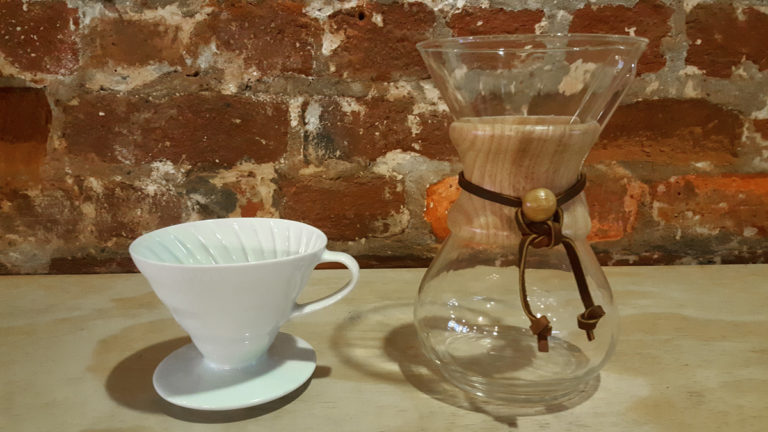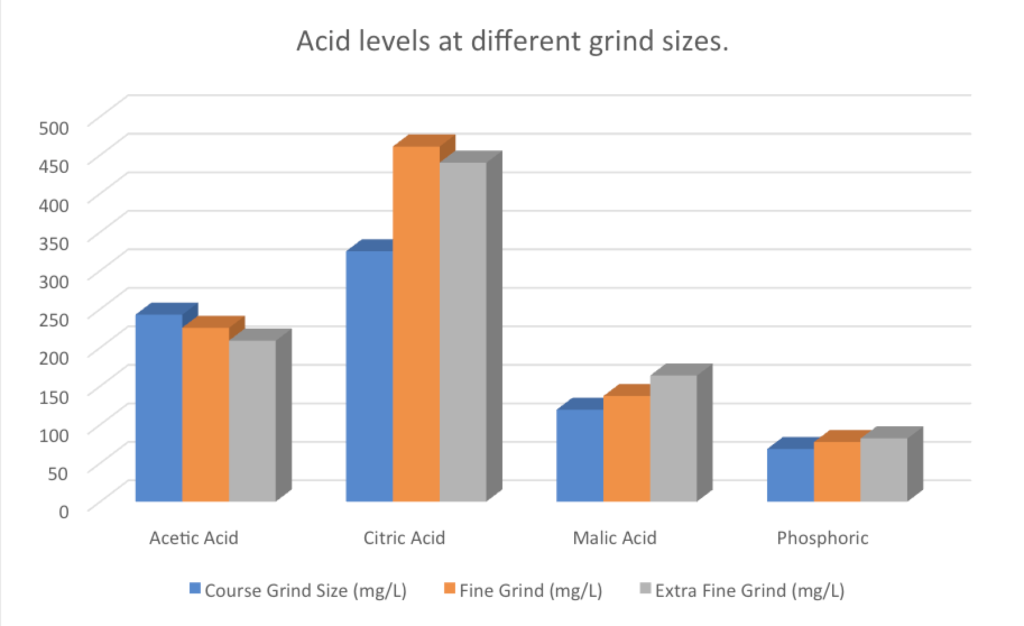Chemex vs Hario V60 – Pour Over showdown

I’m fond of pour over extractions. Hario V60 pour overs in particular.
But that’s just me.
You’ll have to read on to get the reasoning behind my seemingly biased opinion.
I’m going to forgot about talking about the materials, brewing recipes, history, etc and just get to the point.
Why are these two brewers different?
Firstly, I am comparing these two devices under the assumption that everybody would be using the accompanying paper filters.
Allow me to also state that a simplistic and logical description of a pour-over brew would be- a paper filtered gravity based extraction. When, said like this, it would seem that these brewing devices would produce the same result and are merely different by design.
This is false.
My Hypothesis.
Below is an excerpt from the Chemex website.
‘Chemex filters are 20-30% heavier than competitive brands and remove even the finest sediment particles as well as the undesirable oils and fats. The formulation of the filter permits the proper infusion time by regulating the filtration rate – not too slow, not too fast’
The Chemex filters restrict the flow rate of the water through the coffee grounds quite dramatically. Consequently, baristas have to grind courser to accommodate for this flow rate restriction.[Grinding courser isn’t that effective for various reasons which I’ll touch on in a future post.]
You can see here that there is a change in acidity profile when one changes the grind size. Acidity is incredibly important in modulating the overall flavour profile of a coffee as well as adding and/or enhancing complexity.
The info above is only of a few of the dominant acids in coffee(Image information Source- www.coffeeresearch.org)
This is a highly overlooked factor of the difference between the Chemex and V60 brewers.
Paper filters in general, hold back on almost all the oils in coffee. This alone dramatically reduces the complexity potential in a brew. A positive factor of this occurrence is the emphasis on acidity. Oils buffer the acids. If the oils are removed, the acids will appear more pronounced.
After taking this into consideration- I’ve come to the conclusion that one cannot simply compare the Chemex to the V60 dripper as if they were intended to produce the same result.
Final thoughts.
Chemex
It appears that the Chemex has more of a monotone cup character. It’s incredibly clear and can be very sweet( granted the right coffee is chosen). It unfortunately lacks complexity.
The 6-cup chemex is great for larger quantities and is a less finicky brewer. Dinner Party? Whip out the Chemex. Don’t like concentrating on perfecting your brew first thing in the morning? The Chemex is for you.
Pouring technique and flow is not as important with the Chemex as it is with a V60 dripper. I would even argue that you probably don’t even need a gooseneck kettle for Chemex brewing, but merely a light and steady hand and a regular kettle. But friends…life is always better with a gooseneck kettle, no matter the brew…for obvious reasons.
Dropping some hard earned cash on some top- notch coffee would seem somewhat wasteful if intended to be brewed in the Chemex alone.
Hario V60
Definitely more complex. There’s much more control when brewing a V60 pour over. There’s a great deal more room for grind size adjustment. You are able to manipulate flow rate and essentially the overall character of the cup. Changing coffee to water ratio is a breeze.
Do you like the idea of manipulating your brew and exploring more of what there is for a coffee to exhibit. Then the Hario V60 dripper is for you. You really need a gooseneck kettle for this one though.
P.s- I brew and enjoy V60’s at home every morning.
Until next time.
